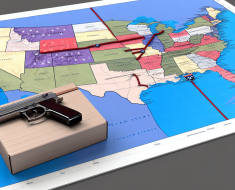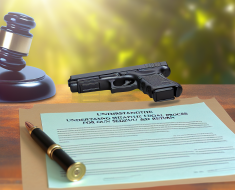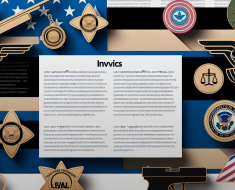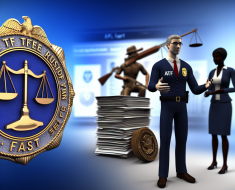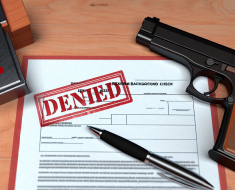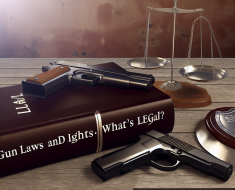How Gun Laws Address Firearms in Schools

The presence of firearms in schools has long been a contentious issue in the United States and many other countries. The increasing frequency of school shootings has intensified the debate, prompting lawmakers to enact various laws aimed at controlling or regulating firearms on school premises. Understanding how these laws function, their effectiveness, and the challenges they face is critical for educators, parents, policymakers, and communities. This article explores how gun laws address firearms in schools by examining legal frameworks, prevention strategies, enforcement practices, and the broader societal implications.
The Evolution of Gun Laws Targeting Schools
Gun laws relating to schools have evolved significantly over the past few decades. Historically, schools were considered safe havens where firearms were strictly prohibited. However, tragic incidents such as the Columbine High School massacre in 1999 and more recent shootings like those at Sandy Hook Elementary School (2012) and Marjory Stoneman Douglas High School (2018) have led to sweeping legislative changes.
In response to such tragedies, federal and state governments have enacted a variety of laws designed to keep guns out of schools while balancing constitutional rights. Some key developments include:
- The Gun-Free School Zones Act (GFSZA) of 1990: This federal law prohibits unauthorized individuals from knowingly possessing a firearm in a school zone. It defines a school zone as in or on school grounds or within 1,000 feet of a school.
- State-Level Variations: While the GFSZA provides a baseline, states have developed diverse policies ranging from strict bans on guns on campuses to allowing licensed personnel to carry concealed weapons for protection.
- Safe Storage Laws: Several states mandate that firearms be securely stored at home to prevent children from accessing them, indirectly reducing risks associated with guns potentially brought into schools.
This evolution reflects ongoing efforts to adapt legal frameworks in light of changing threats and societal attitudes toward gun ownership and safety.
Federal Legislation: Frameworks and Limitations
The primary federal legislation governing firearms near schools is the Gun-Free School Zones Act (GFSZA), enacted as part of the Crime Control Act of 1990. The law makes it unlawful for any individual who is not licensed by the state to possess a firearm within 1,000 feet of public, parochial, or private elementary or secondary schools.
However, the GFSZA has notable limitations:
- Licensing Exceptions: Individuals with valid state-issued licenses for carrying firearms are exempted from prosecution under this law.
- Enforcement Challenges: Measuring the exact distance from a school can be difficult in practice; this complicates enforcement efforts.
- No Comprehensive Ban on Guns Inside Schools: The law primarily regulates possession within proximity but does not explicitly prohibit authorized personnel from carrying weapons inside schools under certain circumstances.
A significant turning point came with United States v. Lopez (1995), where the Supreme Court struck down portions of the GFSZA on grounds that Congress had exceeded its authority under the Commerce Clause. This ruling limited federal reach over local school firearm policies and shifted much responsibility to states.
Diverse State Approaches: From Zero Tolerance to Armed Personnel
The most significant variations in gun laws concerning schools exist at the state level. States employ different strategies depending on political climate, community values, and responses to incidents involving firearms on campus. These approaches generally fall into several categories:
- Total Bans on Firearms: Many states enforce strict prohibitions against any possession of firearms on school grounds by students and staff alike. Violations often result in severe disciplinary action or criminal penalties.
- Allowing Concealed Carry by Staff or Volunteers: Some states permit certain trained school personnel—such as teachers or security officers—to carry concealed weapons on campus. For example:
- Texas: Under Senate Bill 11 (2019), school districts can authorize trained staff members to carry handguns on campus.
- Florida: Following the Parkland shooting in 2018, Florida passed legislation allowing districts to arm certain employees after rigorous training.
- Gun Storage Requirements at Home: States like California have passed strict safe storage laws designed to prevent children from accessing firearms that could be brought into schools inadvertently or intentionally.
- Red Flag Laws Impacting School Safety: Some states use extreme risk protection orders (“red flag” laws) that allow temporary removal of firearms from individuals deemed dangerous—potentially preventing threats before they materialize at schools.
This patchwork approach leads to markedly different experiences for students depending on their location—sometimes sparking debates about consistency and equity across districts and states.
The Role of Prevention: Beyond Legislation
Laws alone cannot fully address the complex issue of firearms in schools; prevention strategies play an essential role. These initiatives often complement legal measures by focusing on education, awareness, mental health support, and community engagement.
Key prevention methods include:
- School Resource Officers (SROs): Many districts employ law enforcement officers stationed in schools to deter violence and respond quickly during



